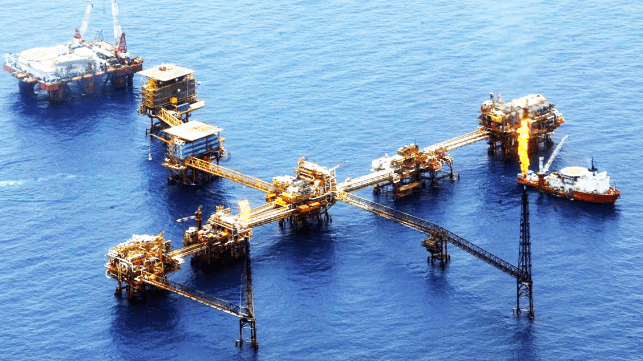US EPA Collaborates with Mexico’s PEMEX to Reduce Methane Emissions

As environmentalists continue to focus attention on the release of methane and pressure build on nations around the world to stop methane emissions, the U.S. Environmental Protection Agency is taking the unusual step of collaborating with Mexico’s PEMEX (Petróleos Mexicanos) to reduce the emissions of the harmful gas. Mexico is reported to be the eighth largest flarer with the U.S. and others pushing for more steps to reduce methane emissions.
PEMEX has been among the oil producers that routinely burn off gas during its oil production operations. A report carried last week by Reuters said that PEMEX in 2016 had committed to a program to reduce emissions. However, five years later they have failed to complete the efforts with Reuters saying it was told the project has been abandoned.
Last year as part of the UN COP 26 conference on global warming the developed nations committed to efforts to reduce and eliminate methane emissions. Last week at the next conference the UN reported it is launching a system using satellites to identify large sources of methane emissions in an effort to increase remediation efforts. Scientists pointed out that methane is more harmful to the environment but also quicker to dissipate once the leaks are stopped.
Through the new collaboration, the EPA says it will work together with PEMEX to identify major methane emissions sources across the company’s operations, including specific hotspot sites, infrastructure and equipment sources, and operational sources of methane. The collaboration will also recommend mitigation options, including flare capture and flare efficiency opportunities, equipment replacement and operational changes to eliminate routine venting, and regular leak detection and repair. Experts point out that as the facilities age the leaks become more prevalent.
With EPA technical support, by the first half of 2023, PEMEX has committed to developing and releasing a plan for implementing these mitigation activities, beginning with PEMEX’s onshore oil and gas operations, including measures to reduce routine flaring and venting and fugitive methane emissions.
PEMEX said in announcing the initiative on November 12 that “With this cooperation, Petróleos Mexicanos will be able to receive recommendations from the EPA on options to mitigate these sources.” Through the agreement, the EPA will also support this institution with economic diagnoses and analyses to support decision-making for PEMEX’s onshore oil and natural gas operations.
The EPA said that these actions will support the priorities of PEMEX to deploy readily available methane reduction technologies and practices. “Implementing these studies and measures will reduce potent greenhouse gas emissions to achieve near-term climate benefits, significantly improve air quality and public health, conserve natural gas that would otherwise be wasted, improve operational efficiency, and reduce operation and maintenance costs,” according to the EPA.
Attending the climate conference that concluded last week in Egypt, Mexico’s Foreign Minister Marcelo Ebrard promised that his country would do its part to meet the global goals to reduce emissions.
